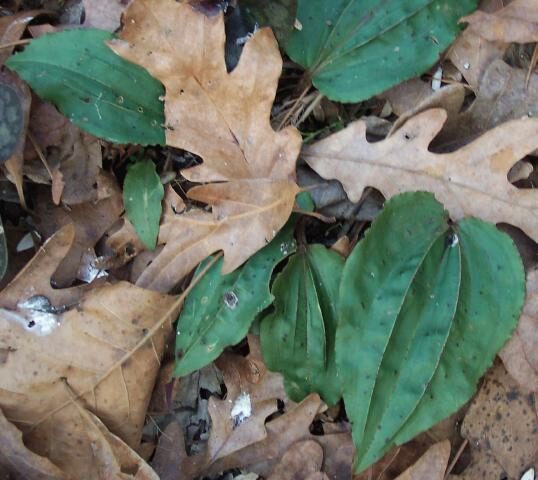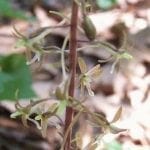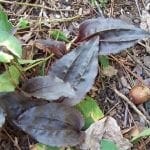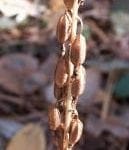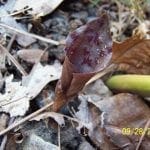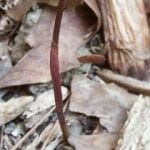- Flowers
- Leaves as seen in winter
- Leaves
- Seed capsules
- New leaf emerging in fall
- Emerging summer bloom stalk
Scientific Name:
Tipularia discolor
Common Name:
Cranefly Orchid
Scientific Name Pronounciation:
tip-YOO-lar-ee-uh DIS-kol-or
Plant Type:
Perennial
Plant Hardiness Zones:
4-10
Plant Hardiness Zone(s):
Usual Size:
4 in. (bloom stalk 12-24 in.) H x 4 in. W
Flower:
Purplish green flowers arranged 20-30 along a stalk in late summer.
Bloom Time Notes:
Late summer
Leaf:
A single basal leaf that looks pleated, dull green, blotched with purple above, purplish beneath; appears in fall but withers and disappears at flowering time.
Fruit:
Fruits are parallel to stem; oval capsule containing many small seeds.
Wildlife:
Natural Habitat:
Wet to dry places in hardwood and pine forests.
Propagation:
Bloom Time:
Sun or Shade:
Companion Plants:
Cultural Notes:
Cranefly Orchid (Tipularia discolor) is found in every county in Georgia; the best time to locate this orchid is during a stroll in the winter woods after trees shed their leaves and the orchid sends up its wrinkled leaf. Thrives best in partial shade to shade; humus-rich damp soil, but is not especially particular about it.
Transplant tips: Roots are fleshy, attached to a solid corm forming a horizontal series of corms; don't let roots dry out until plant is established.
Other Common Names: Elfin Spur, Mottled Cranefly

